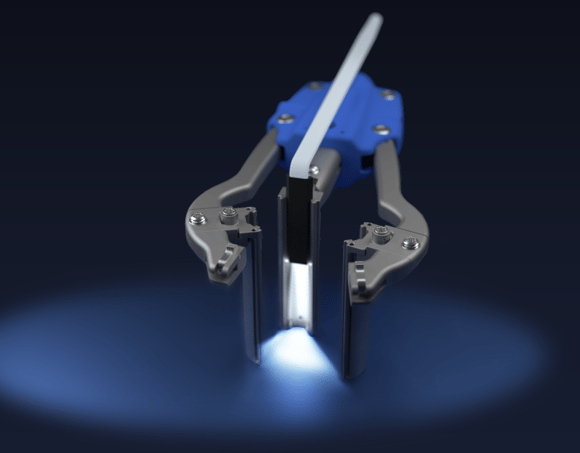
What are the latest spinal surgeries offered today?
It is reasonable to consider spinal surgery if back pain persists after exhausting non-surgical remedies and if medication offers little to no relief, or if you're unable to perform basic daily activities. Before resigning yourself to surgical options, make sure you receive consultations from multiple spinal specialists. The key is to ensure that the procedure they choose best matches your lifestyle and desired level of physical activity.
Have you ever found yourself or a family/friend in this situation? About 400,000 people in the United States undergo spine surgery each year.
The good news is...
The International Journal of Spine Surgery published an article about advancements in spinal surgery techniques. One being improved endoscopic optics and instrumentation leading to better spinal anatomy visualization with ultra-minimally invasive approaches.
Other industry trends include increased adoption of minimally invasive surgical surgery (MISS), increased prioritization on motion preserving techniques and increased adoption of lateral approaches.
Minimally invasive lateral surgical approaches provide an advantage over posterior methods by allowing “a greater extent of discectomy, avoiding entry in to the spinal canal and subsequent scarring adjacent to the neural elements and sparing of the posterior elements of exposure related damage.” [http://media.axon.es/pdf/87399_2.pdf]
In other words, these new approaches allow surgeons to create smaller incisions that can minimize damage to sensitive tissues and allow for fewer complications and faster recovery times. The trade-off is that the surgeon must perform these surgeries in narrower and deeper cavities, where visualization becomes critical.
As a leading custom medical device lighting company, our dedication inspires us to stay on top of the latest spinal surgery techniques and technological advancements in the market. This article covers traditional spinal surgery procedures versus newer "motion preserving" approaches aimed at preserving normal range of motion.
Bonus: Download our Surgical Retractors - Types, Usage & Options as a PDF.
Get the PDF version to save to your desktop and read it when it's convenient for you.
(No email required):
Types of Spinal Surgery Procedures Today

image credit: Spine
There are fusion, decompression, vertebral fracture repair and now "motion preserving".
- Decompression - Reduce pain and neurological symptoms by removing pressure on the spinal chord or a pinched nerve.
- Vertebral Fracture Repair - Repair a fractured vertebrae to reduce pain and stabilize vertebral body.
- Fusion - a surgical procedure to create unions between rigid bones using a bone graft. Usually done in addition to other procedures.
- Motion Preserving - Newer surgical approach to "fusion" while trying to preserve normal range of motion.
Spinal Decompression Procedures
Spinal decompression surgery refers to various procedures intended to relieve symptoms caused by pressure, or compression, on the spinal cord.
Common Techniques for Decompression
Discectomy - Removal of a portion or entire disk, which sits on top of the vertebral body in between your vertebrae, for the purpose of decompression.
Foraminotomy - Procedure to enlarge the foramen. The foramen is the opening on the posterior of the vertebrae where spinal nerves exit the spinal canal. This reduces pressure on the spinal nerves. This commonly done to treat spinal stenosis, which causes the spinal canal to narrow and pinches nerves. Can be performed using MISS techniques.
Laminotomy/Laminectomy – Removes part or all of the bony lamina that protects the spinal cord. The lamina is the bony part of a vertebrae that you see in skeletons. Sometimes the lamina is removed for decompressions, but also when better access is needed to intervertebral discs.
Corpectomy – Involves the removal of the disc on both sides of the vertebra and a portion or the entire vertebral body often anterior. A bone graft or cage is then inserted into the space to cause fusion between the vertebrae. This is often done because of multi-level cervical stenosis (bony growth) causing cord compression because of the bone spur growth.
Vertebral Fracture Repair Options
When pain persists, surgery may be considered to repair the fracture. Two common procedures for spine fractures include:
Vertebroplasty – Treatment for painful compression fractures, usually from osteoporosis or tumors (occurs mostly in thoracic, sometimes lumbar region). A needle is guided to the fracture location using fluoroscopy and bone cement is injected into the void to fill the fraction.
Kyphoplasty – Minimally invasive procedure to fix compression fractures. A surgeon will stick a needle into the vertebrae and inflate a balloon to restore vertebrae height. The balloon is then removed creating a cavity, which is filled with cement to maintain height of the vertebrae.
Lumbar Spinal Fusion Surgery
Fusion is a very controversial approach. It used to be common in all orthopedic specialties but is now only limited to the spine. This is because it severely limits mobility of the joint, but is effective in stopping pain. Posterior lumbar fusions are the most common approaches.
Lumbar fusions are typically performed for diagnosis of Degenerative Disc Disease (DDD), herniated discs, spondylolisthesis, and spinal stenosis.
Fusion – Uses a bone graft often in conjunction with a screw and plate system. Normally fusing together transverse processes on both sides for stabilization. Multilevel fusions are common with most being 2-3 levels.
Interbody – Instead of using the transverse process, the disk is removed and a bone graft is inserted in its place. Usually in a cage or spacer with grafting material inside, over the course of a 6-18 months the bones will grow together. Titanium supports are normally used in conjunction with an interbody fusion.
Minimally Invasive Spinal Surgeries (MISS)
With MISS, less invasive spine surgery, doctors use specialized instruments to access the spine through small incisions.Surgical retractors are one of those instruments to help surgeons hold an incision or wound open during surgical procedures. Integrating light into a surgical retractor brings multiple benefits. Number one being improved visualization and navigation of sensitive areas.

Less Invasive Spinal Surgeries Today
Minimally Invasive Spinal Surgery (MISS) - Using MISS for discectomies is growing in popularity. Main procedures including discectomies, laminectomies, interbody fusions, pedicle screw instrumented fusions, and motion-preserving techniques are being adapted for minimally invasive approaches.
Here are the most common procedures using a MISS approach:
Microdiscectomy – Posterior approach utilizing an incision 1.5 inches wide. Utilizes special retractors and operating microscope.
Percutaneous Discectomy – Percutaneous discectomies allow for decompression of small, contained, or bulging herniated discs in 30 minutes or less through an x-ray-guided needle inserted into the disc to remove tissue. Can also be done using a laser, an automated cutting and suction device, or by using a cannula in conjunction with the needle.
Nucleoplasty – Plasma disc decompression is a procedure that coblation technology to ablate and remove tissue in the nucleus of the disc.
"Motion Preserving" Surgery Approach
There is great excitement over the potential outcomes benefit from utilizing nonfusion or motion-preserving surgeries. Bones are not joined together, as they are in Fusion, so natural range of motion is preserved.
It is predicted that these techniques will eventually cannibalize the Fusion market, but as of now the U.S. market is lagging. Only at approximately 10% today, the U.S. market is expected to grow to 16% by 2020.
Posterior Motion Preservation: Alternative to Spinal Fusion
Stephen H. Hochschuler, MD; co-founder and orthopedic surgeon with the Texas Back Institute in Plano, TX states: "There are a wide variety of posterior motion preservation devices in various stages of development and clinical investigation."
"The intent of these devices is to provide a better treatment alternative than spine fusion for patients with pain and loss of function caused by specific back problems, such as lumbar spinal stenosis, facet pain, and degenerative disc disease."
Posterior conditions (back of the spine) may be improved with posterior motion preservation devices.
These devices are categorized by:
1. Interspinous Process Spacers – MISS Implantable spacer that decompresses the nerve. Designed to open the central canal.
2. Posterior Dynamic Stabilization Systems – Uses pedicle screw system but flexes. "Internal brace on the spine", allowing more normal movement of the spine.
3. Facet Replacement – Replaces complete posterior of the vertebrae.
4. Anterior Motion Preservation – Total disc replacement in process.
Conclusion
Spinal surgeries and spinal surgery devices are constantly evolving.
The growth of spinal devices will be driven by the demand for minimally invasive spine surgeries and their need for technological advancement. The advanced surgical procedures benefits the patients with less down time, pain and scarring.
A growing number of spinal non-fusion procedures are being performed due to the beneficial outcomes for patients. The market is expected to reach 17.27 billion (US) by 2021.
Lumitex is inspired to help with innovative lighting solutions that adapt to your idea. We work with original equipment manufacturers to engineer lighting into spinal retractor systems allowing surgeons to better navigate minimally open cavities.




Comments